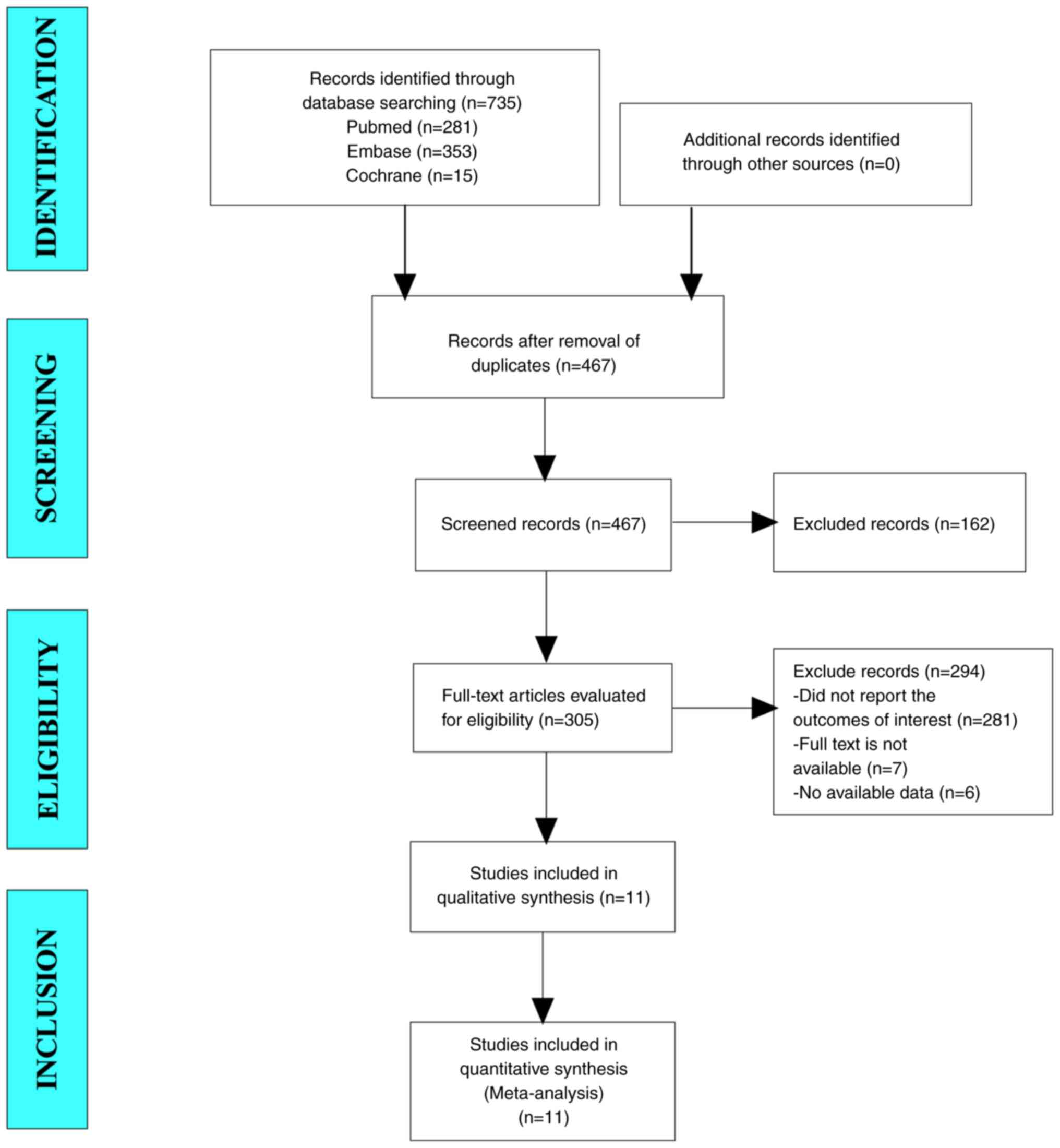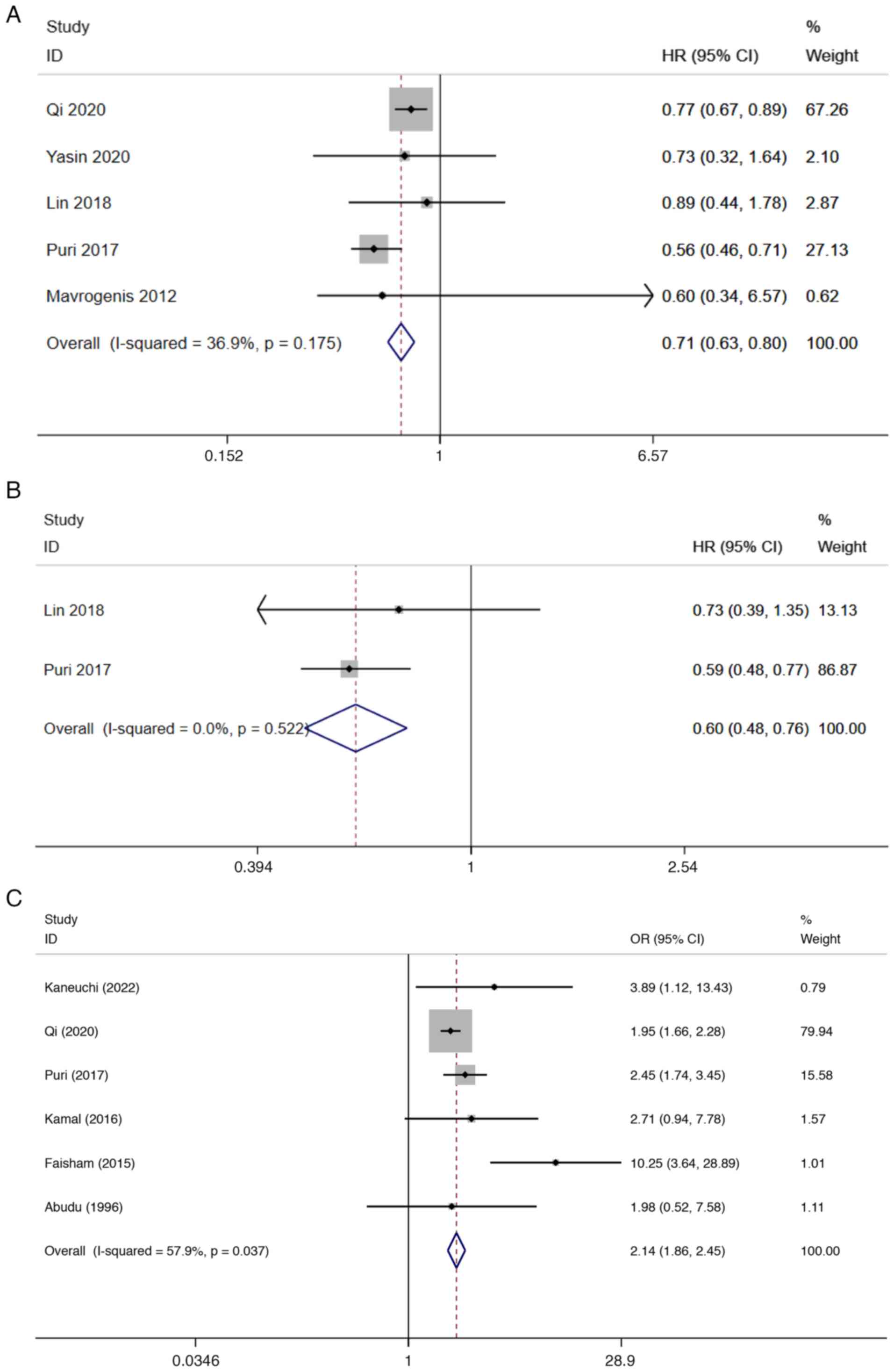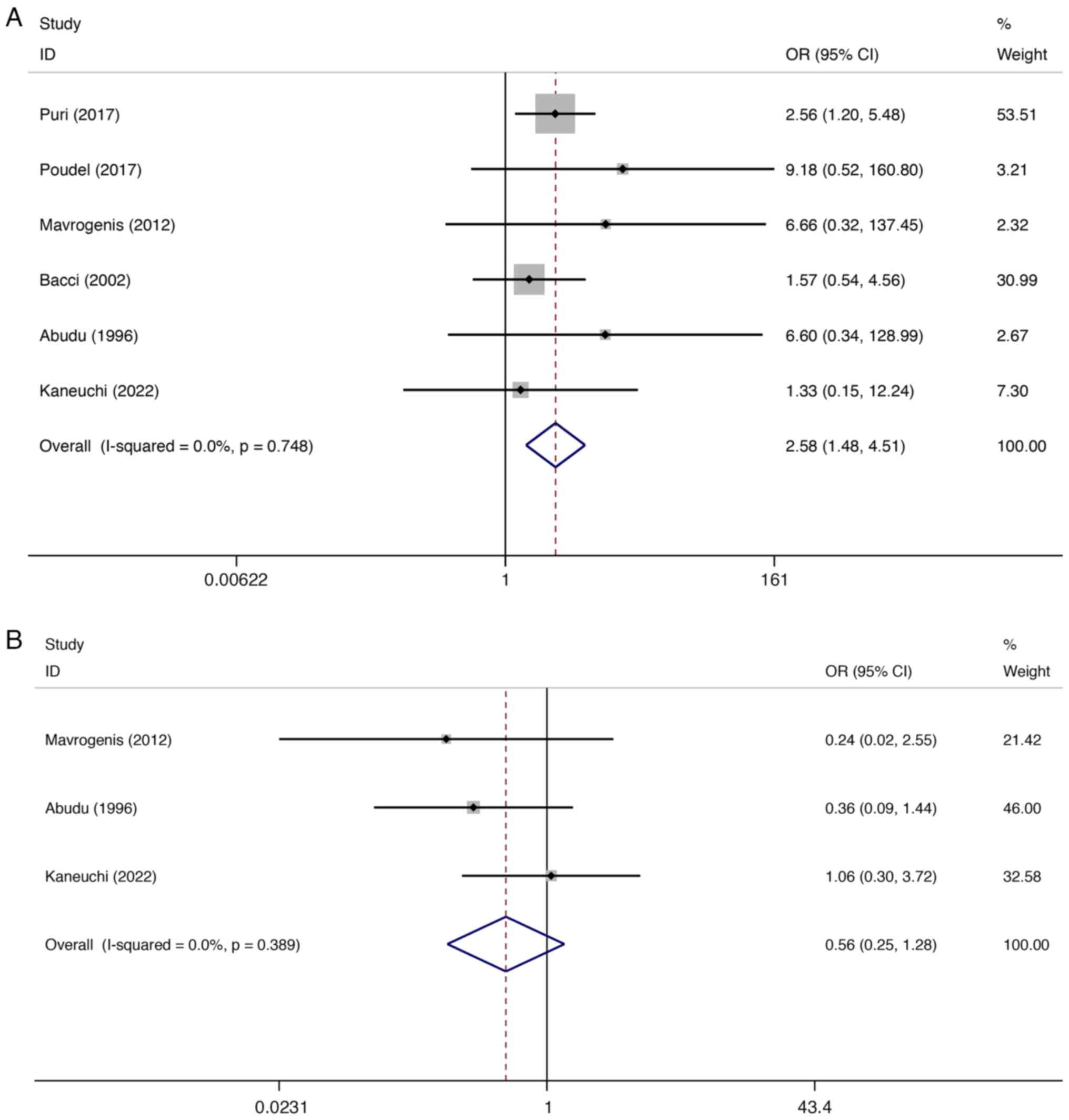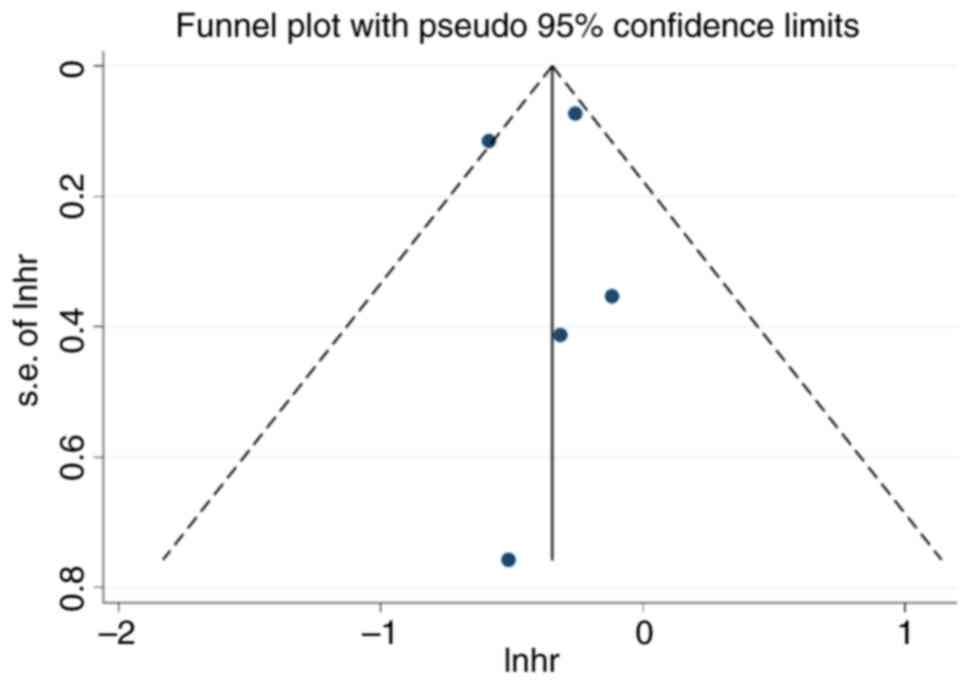|
1
|
Wang LL, Gebhardt MC and Rainusso N:
Osteosarcoma: Epidemiology, pathology, clinical presentation, and
diagnosis. UpToDate. 2022.
|
|
2
|
Beird HC, Bielack SS, Flanagan AM, Gill J,
Heymann D, Janeway KA, Livingston JA, Roberts RD, Strauss SJ and
Gorlick R: Osteosarcoma. Nat Rev Dis Primers. 8:772022. View Article : Google Scholar : PubMed/NCBI
|
|
3
|
Eaton BR, Schwarz R, Vatner R, Yeh B,
Claude L, Indelicato DJ and Laack N: Osteosarcoma. Pediatr Blood
Cancer. 68 (Suppl 2):e283522021. View Article : Google Scholar : PubMed/NCBI
|
|
4
|
American cancer society, . Cancer facts
and figures 2020. American cancer society Inc.; Atlanta: pp. 1–52.
2020
|
|
5
|
Prater S and McKeon B: Osteosarcoma.
StatPearls Treasure Island, Fl: 2023
|
|
6
|
Luetke A, Meyers PA, Lewis I and Juergens
H: Osteosarcoma treatment-where do we stand? A state of the art
review. Cancer Treat Rev. 40:523–532. 2014. View Article : Google Scholar : PubMed/NCBI
|
|
7
|
Italiano A, Mir O, Mathoulin-Pelissier S,
Penel N, Piperno-Neumann S, Bompas E, Chevreau C, Duffaud F,
Entz-Werlé N, Saada E, et al: Cabozantinib in patients with
advanced Ewing sarcoma or osteosarcoma (CABONE): A multicentre,
single-arm, phase 2 trial. Lancet Oncol. 21:446–455. 2020.
View Article : Google Scholar : PubMed/NCBI
|
|
8
|
Marec-Berard P, Dalban C, Gaspar N,
Brugieres L, Gentet JC, Lervat C, Corradini N, Castex MP, Schmitt
C, Pacquement H, et al: A multicentric randomized phase II clinical
trial evaluating high-dose thiotepa as adjuvant treatment to
standard chemotherapy in patients with resectable relapsed
osteosarcoma. Eur J Cancer. 125:58–68. 2020. View Article : Google Scholar : PubMed/NCBI
|
|
9
|
Carty CP, Dickinson IC, Watts MC, Crawford
RW and Steadman P: Impairment and disability following limb salvage
procedures for bone sarcoma. Knee. 16:405–408. 2009. View Article : Google Scholar : PubMed/NCBI
|
|
10
|
Qi L, Ren X, Liu Z, Li S, Zhang W, Chen R,
Chen C, Tu C and Li Z: Predictors and survival of patients with
osteosarcoma after limb salvage versus amputation: A
population-based analysis with propensity score matching. World J
Surg. 44:2201–2210. 2020. View Article : Google Scholar : PubMed/NCBI
|
|
11
|
Natarajan MV, Govardhan RH, Williams S and
Raja Gopal TS: Limb salvage surgery for pathological fractures in
osteosarcoma. Int Orthop. 24:170–172. 2000. View Article : Google Scholar : PubMed/NCBI
|
|
12
|
Ebeid W, Amin S and Abdelmegid A: Limb
salvage management of pathologic fractures of primary malignant
bone tumors. Cancer Control. 12:57–61. 2005. View Article : Google Scholar : PubMed/NCBI
|
|
13
|
Han G, Bi WZ, Xu M, Jia JP and Wang Y:
Amputation Versus Limb-Salvage Surgery in Patients with
Osteosarcoma: A Meta-analysis. World J Surg. 40:2016–2027. 2016.
View Article : Google Scholar : PubMed/NCBI
|
|
14
|
Abdelgawad MA, Parambi DGT, Ghoneim MM,
Alotaibi NH, Alzarea AI, Hassan AH and Abdelrahim MEA: A
meta-analysis comparing efficiency of limb-salvage surgery vs
amputation on patients with osteosarcoma treated with neoadjuvant
chemotherapy. Int Wound J. 19:1616–1624. 2022. View Article : Google Scholar : PubMed/NCBI
|
|
15
|
Lo CK, Mertz D and Loeb M:
Newcastle-Ottawa Scale: comparing reviewers' to authors'
assessments. BMC Med Res Methodol. 14:452014. View Article : Google Scholar : PubMed/NCBI
|
|
16
|
Bacci G, Ferrari S, Mercuri M, Longhi A,
Capanna R, Tienghi A, Brach del Prever A, Comandone A, Cesari M,
Bernini G and Picci P: Neoadjuvant chemotherapy for extremity
osteosarcoma-preliminary results of the Rizzoli's 4th study. Acta
Oncol. 37:41–48. 1998. View Article : Google Scholar : PubMed/NCBI
|
|
17
|
Tsuchiya H and Tomita K: Prognosis of
osteosarcoma treated by limb-salvage surgery: The ten-year
intergroup study in Japan. Jpn J Clin Oncol. 22:347–353. 1992.
View Article : Google Scholar : PubMed/NCBI
|
|
18
|
Smeland S, Wiebe T, Böhling T, Brosjö O,
Jonsson K and Alvegård TA: Chemotherapy in osteosarcoma. The
scandinavian sarcoma group experience. Acta Orthop Scand Suppl.
75:92–98. 2004. View Article : Google Scholar : PubMed/NCBI
|
|
19
|
Loh AHP, Wu H, Bahrami A, Navid F,
McCarville MB, Wang C, Wu J, Bishop MW, Daw NC, Neel MD and Rao BN:
Influence of bony resection margins and surgicopathological factors
on outcomes in limb-sparing surgery for extremity osteosarcoma.
Pediatr Blood Cancer. 62:246–251. 2015. View Article : Google Scholar : PubMed/NCBI
|
|
20
|
Mavrogenis AF, Abati CN, Romagnoli C and
Ruggieri P: Similar survival but better function for patients after
limb salvage versus amputation for distal tibia osteosarcoma. Clin
Orthop Relat Res. 470:1735–1748. 2012. View Article : Google Scholar : PubMed/NCBI
|
|
21
|
Abudu A, Sferopoulos NK, Tillman RM,
Carter SR and Grimer RJ: The surgical treatment and outcome of
pathological fractures in localised osteosarcoma. J Bone Joint Surg
Br. 78:694–698. 1996. View Article : Google Scholar : PubMed/NCBI
|
|
22
|
Zeifang F, Sabo D and Ewerbeck V:
Pathological fracture in primary malignant bone tumors. Chirurg.
71:1121–1125. 2000.(In German). View Article : Google Scholar : PubMed/NCBI
|
|
23
|
Kaneuchi Y, Yoshida S, Fujiwara T, Evans S
and Abudu A: Limb salvage surgery has a higher complication rate
than amputation but is still beneficial for patients younger than
10 years old with osteosarcoma of an extremity. J Pediatr Surg.
57:702–709. 2022. View Article : Google Scholar : PubMed/NCBI
|
|
24
|
Yasin NF, Abdul Rashid ML and Ajit Singh
V: Survival analysis of osteosarcoma patients: A 15-year
experience. J Orthop Surg (Hong Kong). 28:23094990198966622020.
View Article : Google Scholar : PubMed/NCBI
|
|
25
|
Lin L, Deng S, Zhang F, Liang Y and Huang
Z: The extremity localized classic osteosarcomas have better
survival than the axial non-classics. World J Surg Oncol.
16:392018. View Article : Google Scholar : PubMed/NCBI
|
|
26
|
Puri A, Byregowda S, Gulia A, Crasto S and
Chinaswamy G: A study of 853 high grade osteosarcomas from a single
institution-are outcomes in Indian patients different? J Surg
Oncol. 117:299–306. 2018. View Article : Google Scholar : PubMed/NCBI
|
|
27
|
Poudel RR, Tiwari V, Kumar VS, Bakhshi S,
Gamanagatti S, Khan SA and Rastogi S: Factors associated with local
recurrence in operated osteosarcomas: A retrospective evaluation of
95 cases from a tertiary care center in a resource challenged
environment. J Surg Oncol. 115:631–636. 2017. View Article : Google Scholar : PubMed/NCBI
|
|
28
|
Kamal AF, Widyawarman H, Husodo K,
Hutagalung EU and Rajabto W: Clinical outcome and survival of
osteosarcoma patients in cipto mangunkusumo hospital: Limb salvage
surgery versus amputation. Acta Med Indones. 48:175–183.
2016.PubMed/NCBI
|
|
29
|
Faisham WI, Mat Saad AZ, Alsaigh LN, Nor
Azman MZ, Kamarul Imran M, Biswal BM, Bhavaraju VM, Salzihan MS,
Hasnan J, Ezane AM, et al: Prognostic factors and survival rate of
osteosarcoma: A single-institution study. Asia Pac J Clin Oncol.
13:e104–e110. 2017. View Article : Google Scholar : PubMed/NCBI
|
|
30
|
Bacci G, Ferrari S, Lari S, Mercuri M,
Donati D, Longhi A, Forni C, Bertoni F, Versari M and Pignotti E:
Osteosarcoma of the limb. Amputation or limb salvage in patients
treated by neoadjuvant chemotherapy. J Bone Joint Surg Br.
84:88–92. 2002. View Article : Google Scholar : PubMed/NCBI
|














